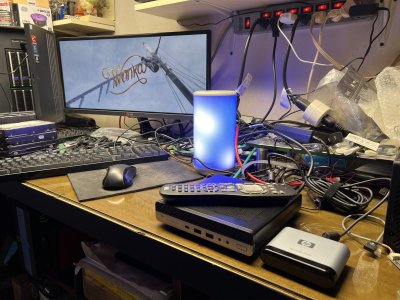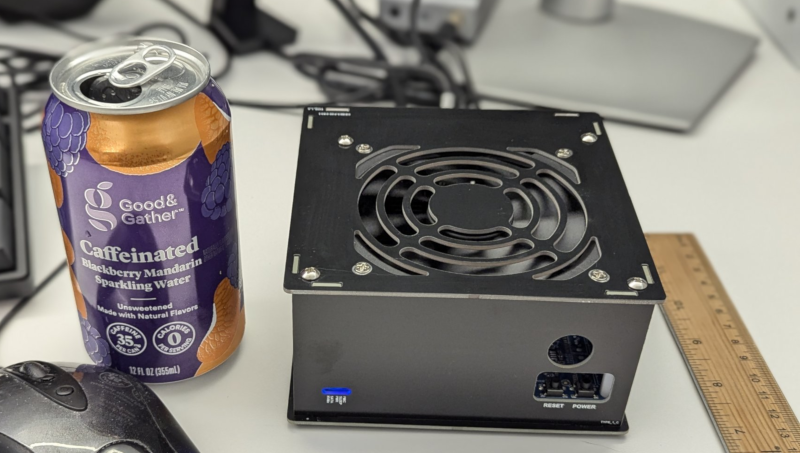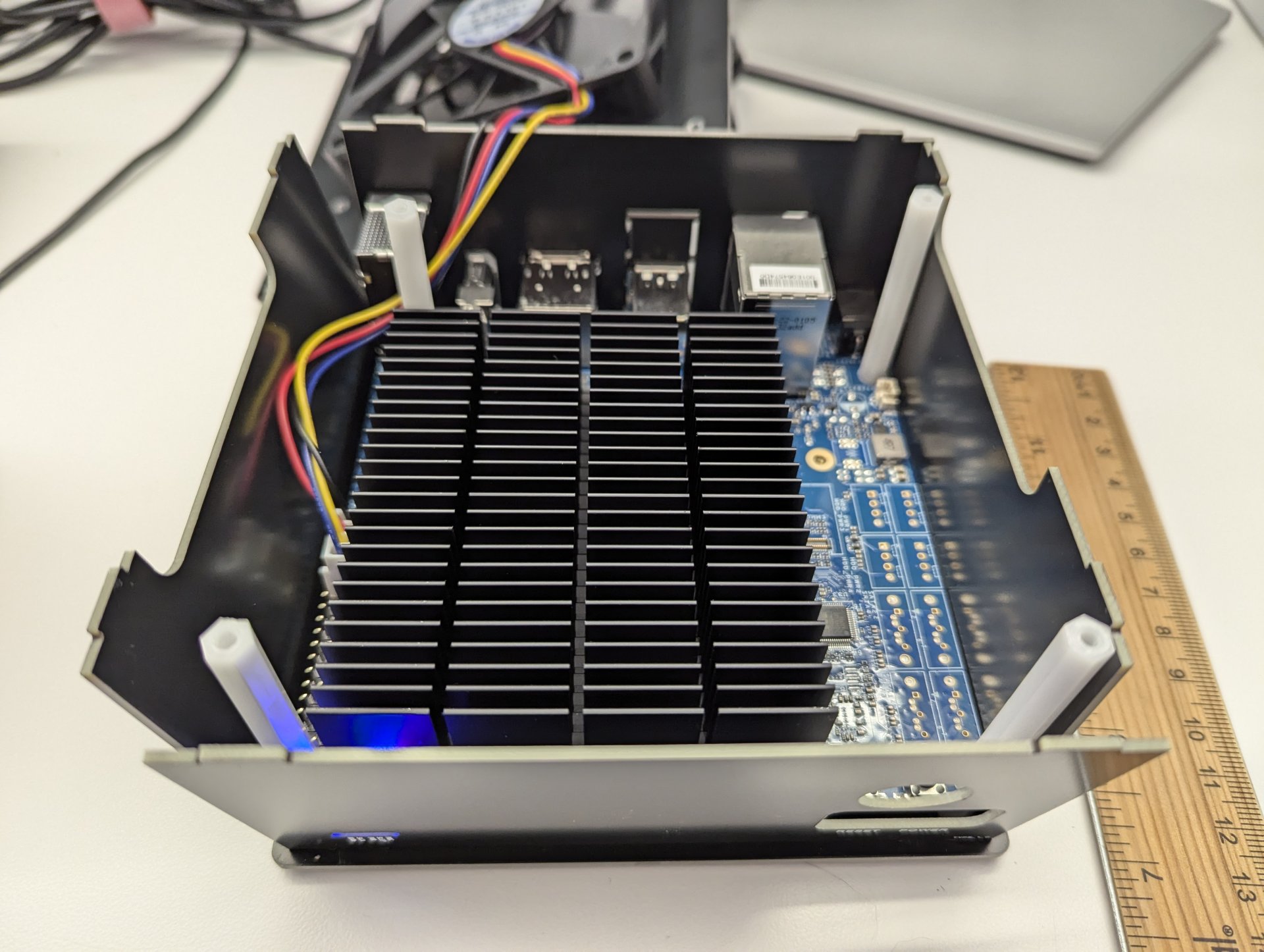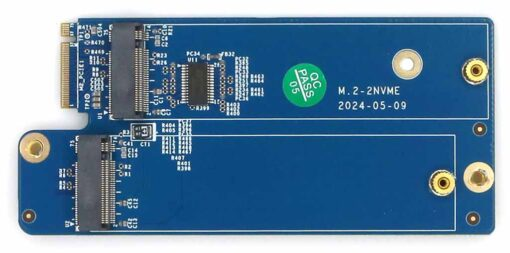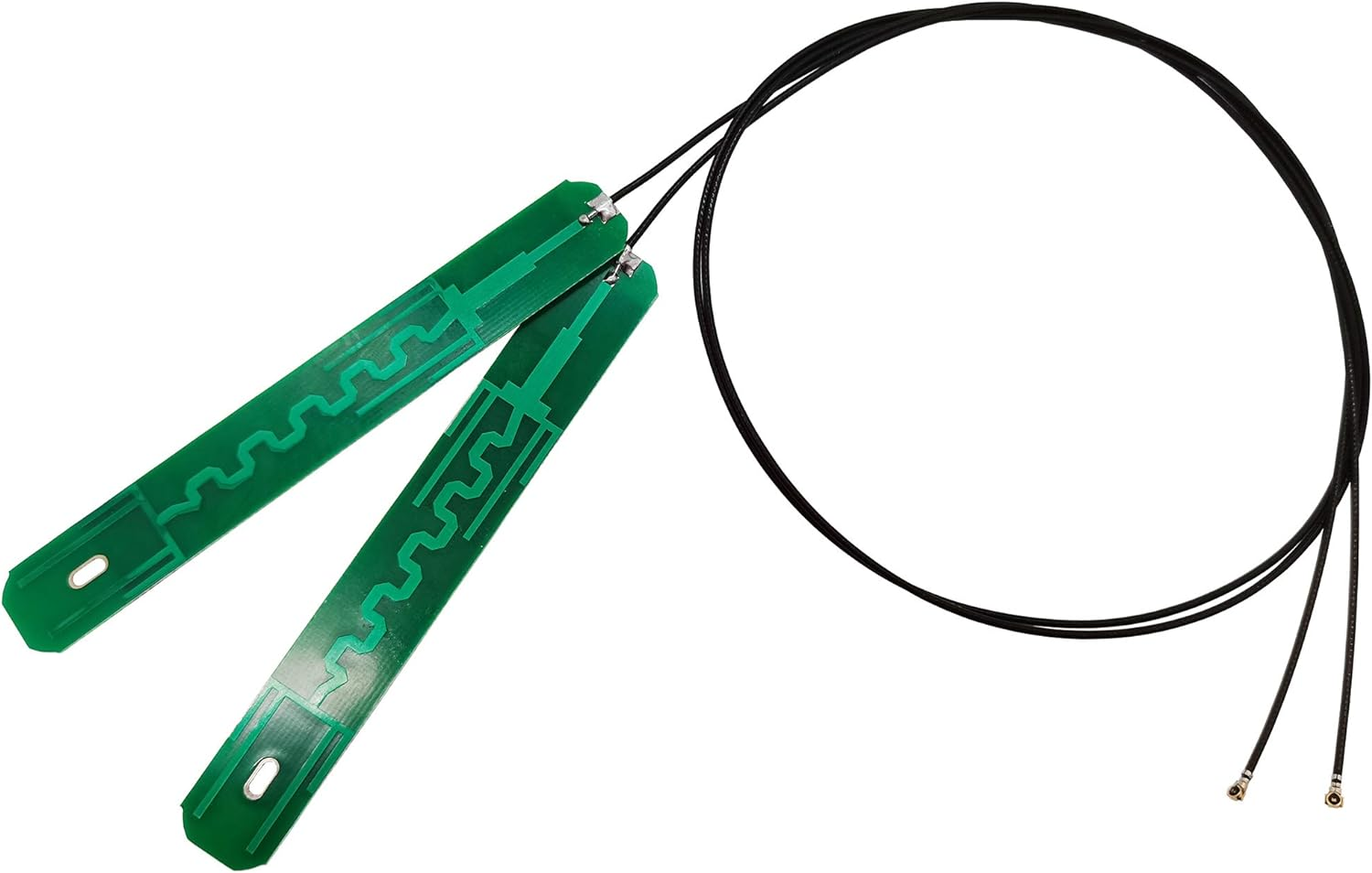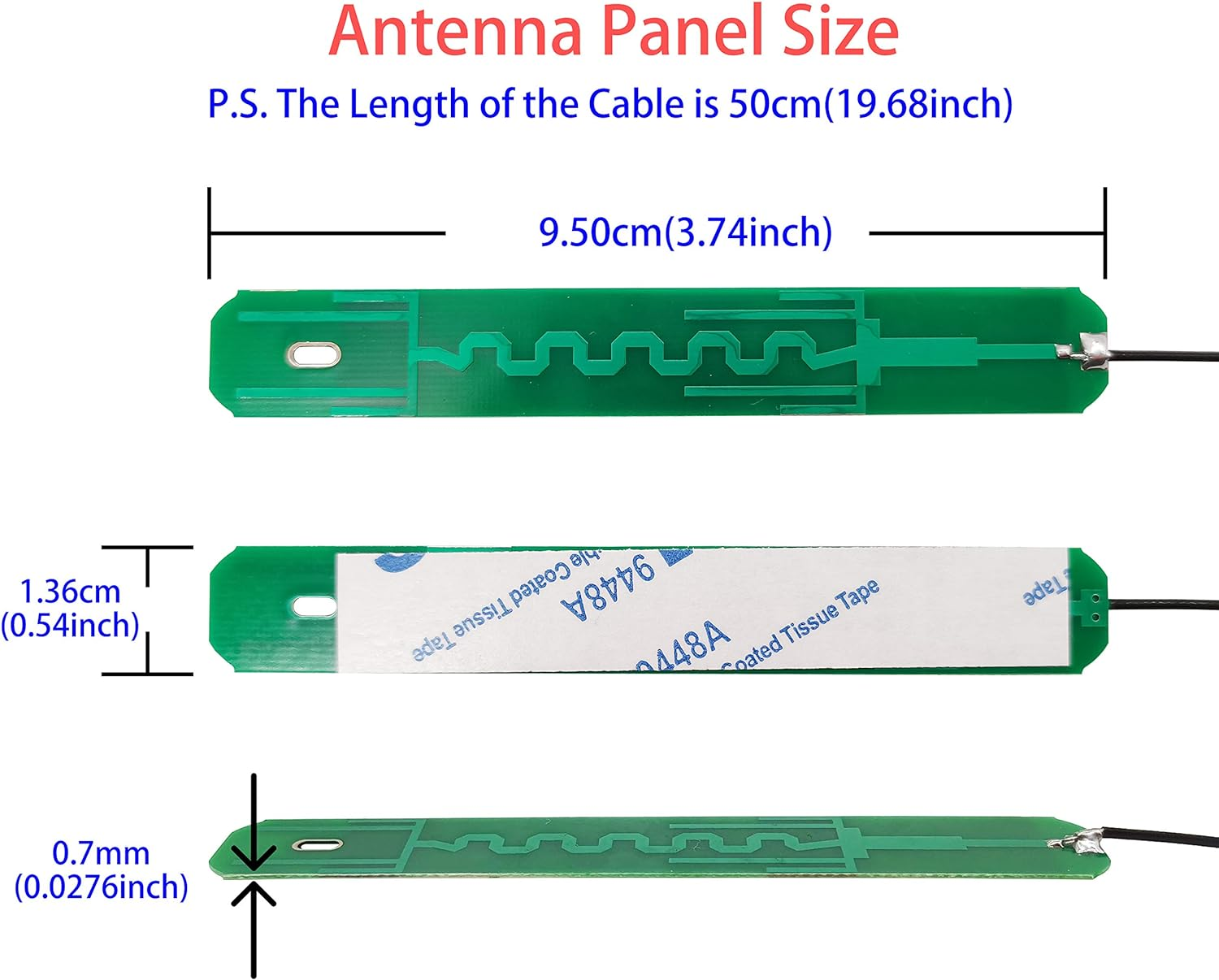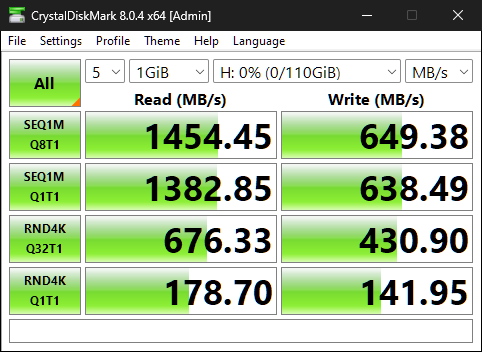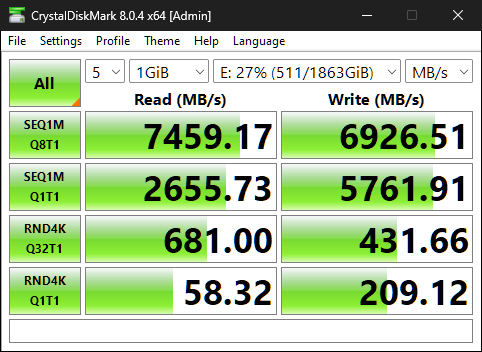Zarathustra[H]
Extremely [H]
- Joined
- Oct 29, 2000
- Messages
- 40,960
Hi Everyone,
What does everyone use for this?
I've been using an Intel Compute Stick STK2M364CC. It's a Cedar City (Skylake era) Core m3-6Y30, 2C/4T 900Mhz base, 2.2Ghz max turbo with 4GB of DDR3L RAM.
It was never a screamer by any means, but it could (and still can in most cases) handle a typical lightweight desktop load pretty well.
I originally bought it as a experiment because I was curious what such a tiny thing could do, and was rather impressed with it. It was sitting around in my office closet forever, so in 2019 I brought it into the office and used it as my break browsing machine. I Installed Linux Mint and the Mullvad VPN client, hooked it up to a secondary video input on my work monitor, got the cheapest USB KVM switch on Amazon, connected it to the guest WIFI, and used it for stuff like posting on the Hardforums and reading the news during my lunch breaks. I also have Spotify on it, so I brought a secondary cheap USB DAC/Amp and my old headphones and connected them to it, so if I need to bury my head and hyper-focus on some work task, I can play music in the background and get it done.
I don't like mixing work and private stuff, and I don't like being spied on, so this seemed like a pretty good and innocuous idea.
I figured if IT is OK with people connecting their phones to the guest wifi, this ought to be fine too. It's one of those "better to ask forgiveness than permission" type of deals, but I doubt I'll ever have to ask forgiveness on this one.
Anyway, it worked very well, but then the pandemic hit, I packed up my desk and brought it home, and worked from home for a couple of years. I only got around to bringing it back in very recently. While it still does great for web browsing, Youtube does not work well. Over the pandemic Youtube seems to have switched codecs from H264 and VP8, and the Skylake era Compute Stick does not support decoding VP9 in hardware.
In other words, watching a youtube video pins all 4 threads like this resulting in skipping and stuttering:
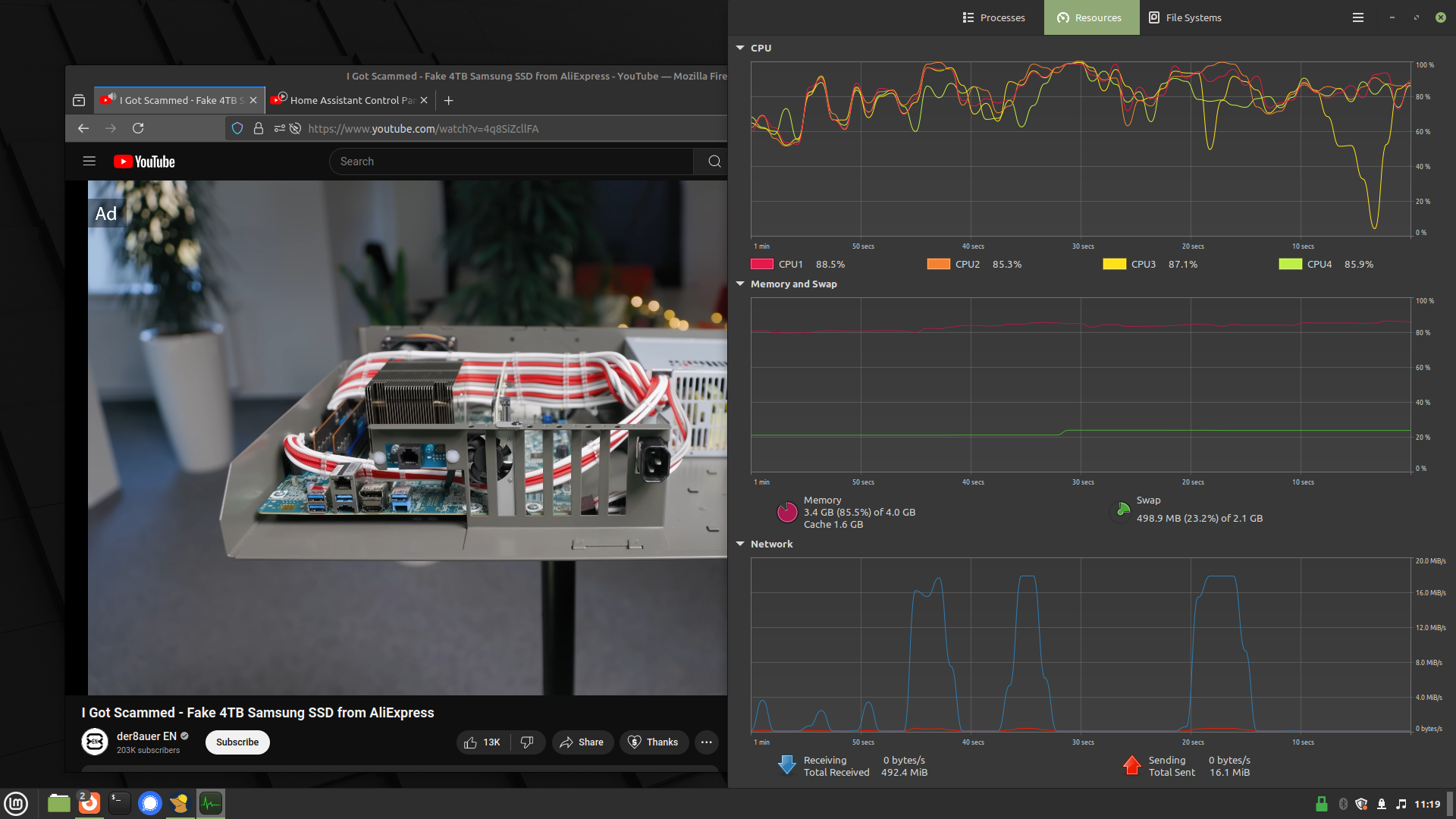
...at least at anything higher than 1080p 30hz...
So, it might be time for a replacement lightweight linux work box.
I have an unused Hardkernel Odroid N2+ at home I could press into service for this cause. While the benchmarks I've seen (limited to Geekbench sadly) the Odroid N2+ falls quite far below even the Compute Stick with the m3-6Y30 in raw CPU power, Linux dies reportedly run well on ARM (I've never actually tested it), and the Odroid N2+ hardware decodes most modern codecs so it ought to work...
...but I have to admit, I hate dealing with microSD and eMMC, and would prefer not having to. It is also unclear which of the packages I would want actually have ARM versions.
So, I have been thinking about what else I might get that would be a good replacement, keepoing in mind that this is very low priority, so I am not going to spend much money on it.
Requirements are:
1.) Cheap
2.) Low power / Quiet / Small / Unobtrusive / Tiny and Inconspicuous
3.) Must be able to output to one 1080p monitor over HDMI or DP.
4.) Able to do basic web/email/youtube desktop stuff, preferably under Linux Mint / Cinnamon
5.) Either hardware decode compatibility with the latest codecs, or enough brute force that this does not matter.
6.) Preferably not Chinese "random brandname generator" crap.
7.) Preferably real storage (SATA or NVMe, not USB, MicroSD or eMMC)
8.) Must have wifi. Does not need to be latest spec. (work is still on 802.11ac anyway)
9.) Must have 2-3 USB2 or faster ports.
10.) Prefer having at least one Gigabit or faster ethernet port. (Intel chipset is a plus)
Things I don't care about:
- TPM / Windows 11 compatibility
- GPU, or high end CPU performance. This will only ever be used for basic desktop use.
- NPU/AI or any bullshit like that.
- New high speed USB-C or Thunderbolt standards. Just don't care
- Multiple monitor outputs
- On board audio
One model I came across and kind of like is the newish Hardkernel Odroid H4. It is x86 using an Intel Processor N97. It has a single DDR5 RAM slot and an x4 m.2 slot.
Pros:
- Reasonably Cheap ($99)
- N97 seems pretty capable (more so than the more popular N100) and supports all the latest standards.
- Ram slot and m.2 slot.
- Hardkernel seems to be a pretty reputable hobbyist small board computer maker, and they are South Korean, not Chinese (huge plus). I've had good experiences with my Odroid N2+ units as Kodi frontends.
- Has what I need, and almost nothing I don't.
Cons
- They nickel and dime you. Board may be $99, but then you have to buy the power supply, case, etc. etc. separately
So, this is the leading candidate right now, but I wonder what there might be out there I am missing. Any other alternatives I may not be aware of I should be keeping in mind?
Appreciate any suggestions.
Any other suggestions?
What does everyone use for this?
I've been using an Intel Compute Stick STK2M364CC. It's a Cedar City (Skylake era) Core m3-6Y30, 2C/4T 900Mhz base, 2.2Ghz max turbo with 4GB of DDR3L RAM.
It was never a screamer by any means, but it could (and still can in most cases) handle a typical lightweight desktop load pretty well.
I originally bought it as a experiment because I was curious what such a tiny thing could do, and was rather impressed with it. It was sitting around in my office closet forever, so in 2019 I brought it into the office and used it as my break browsing machine. I Installed Linux Mint and the Mullvad VPN client, hooked it up to a secondary video input on my work monitor, got the cheapest USB KVM switch on Amazon, connected it to the guest WIFI, and used it for stuff like posting on the Hardforums and reading the news during my lunch breaks. I also have Spotify on it, so I brought a secondary cheap USB DAC/Amp and my old headphones and connected them to it, so if I need to bury my head and hyper-focus on some work task, I can play music in the background and get it done.
I don't like mixing work and private stuff, and I don't like being spied on, so this seemed like a pretty good and innocuous idea.
I figured if IT is OK with people connecting their phones to the guest wifi, this ought to be fine too. It's one of those "better to ask forgiveness than permission" type of deals, but I doubt I'll ever have to ask forgiveness on this one.
Anyway, it worked very well, but then the pandemic hit, I packed up my desk and brought it home, and worked from home for a couple of years. I only got around to bringing it back in very recently. While it still does great for web browsing, Youtube does not work well. Over the pandemic Youtube seems to have switched codecs from H264 and VP8, and the Skylake era Compute Stick does not support decoding VP9 in hardware.
In other words, watching a youtube video pins all 4 threads like this resulting in skipping and stuttering:

...at least at anything higher than 1080p 30hz...
So, it might be time for a replacement lightweight linux work box.
I have an unused Hardkernel Odroid N2+ at home I could press into service for this cause. While the benchmarks I've seen (limited to Geekbench sadly) the Odroid N2+ falls quite far below even the Compute Stick with the m3-6Y30 in raw CPU power, Linux dies reportedly run well on ARM (I've never actually tested it), and the Odroid N2+ hardware decodes most modern codecs so it ought to work...
...but I have to admit, I hate dealing with microSD and eMMC, and would prefer not having to. It is also unclear which of the packages I would want actually have ARM versions.
So, I have been thinking about what else I might get that would be a good replacement, keepoing in mind that this is very low priority, so I am not going to spend much money on it.
Requirements are:
1.) Cheap
2.) Low power / Quiet / Small / Unobtrusive / Tiny and Inconspicuous
3.) Must be able to output to one 1080p monitor over HDMI or DP.
4.) Able to do basic web/email/youtube desktop stuff, preferably under Linux Mint / Cinnamon
5.) Either hardware decode compatibility with the latest codecs, or enough brute force that this does not matter.
6.) Preferably not Chinese "random brandname generator" crap.
7.) Preferably real storage (SATA or NVMe, not USB, MicroSD or eMMC)
8.) Must have wifi. Does not need to be latest spec. (work is still on 802.11ac anyway)
9.) Must have 2-3 USB2 or faster ports.
10.) Prefer having at least one Gigabit or faster ethernet port. (Intel chipset is a plus)
Things I don't care about:
- TPM / Windows 11 compatibility
- GPU, or high end CPU performance. This will only ever be used for basic desktop use.
- NPU/AI or any bullshit like that.
- New high speed USB-C or Thunderbolt standards. Just don't care
- Multiple monitor outputs
- On board audio
One model I came across and kind of like is the newish Hardkernel Odroid H4. It is x86 using an Intel Processor N97. It has a single DDR5 RAM slot and an x4 m.2 slot.
Pros:
- Reasonably Cheap ($99)
- N97 seems pretty capable (more so than the more popular N100) and supports all the latest standards.
- Ram slot and m.2 slot.
- Hardkernel seems to be a pretty reputable hobbyist small board computer maker, and they are South Korean, not Chinese (huge plus). I've had good experiences with my Odroid N2+ units as Kodi frontends.
- Has what I need, and almost nothing I don't.
Cons
- They nickel and dime you. Board may be $99, but then you have to buy the power supply, case, etc. etc. separately
So, this is the leading candidate right now, but I wonder what there might be out there I am missing. Any other alternatives I may not be aware of I should be keeping in mind?
Appreciate any suggestions.
Any other suggestions?
![[H]ard|Forum](/styles/hardforum/xenforo/logo_dark.png)
